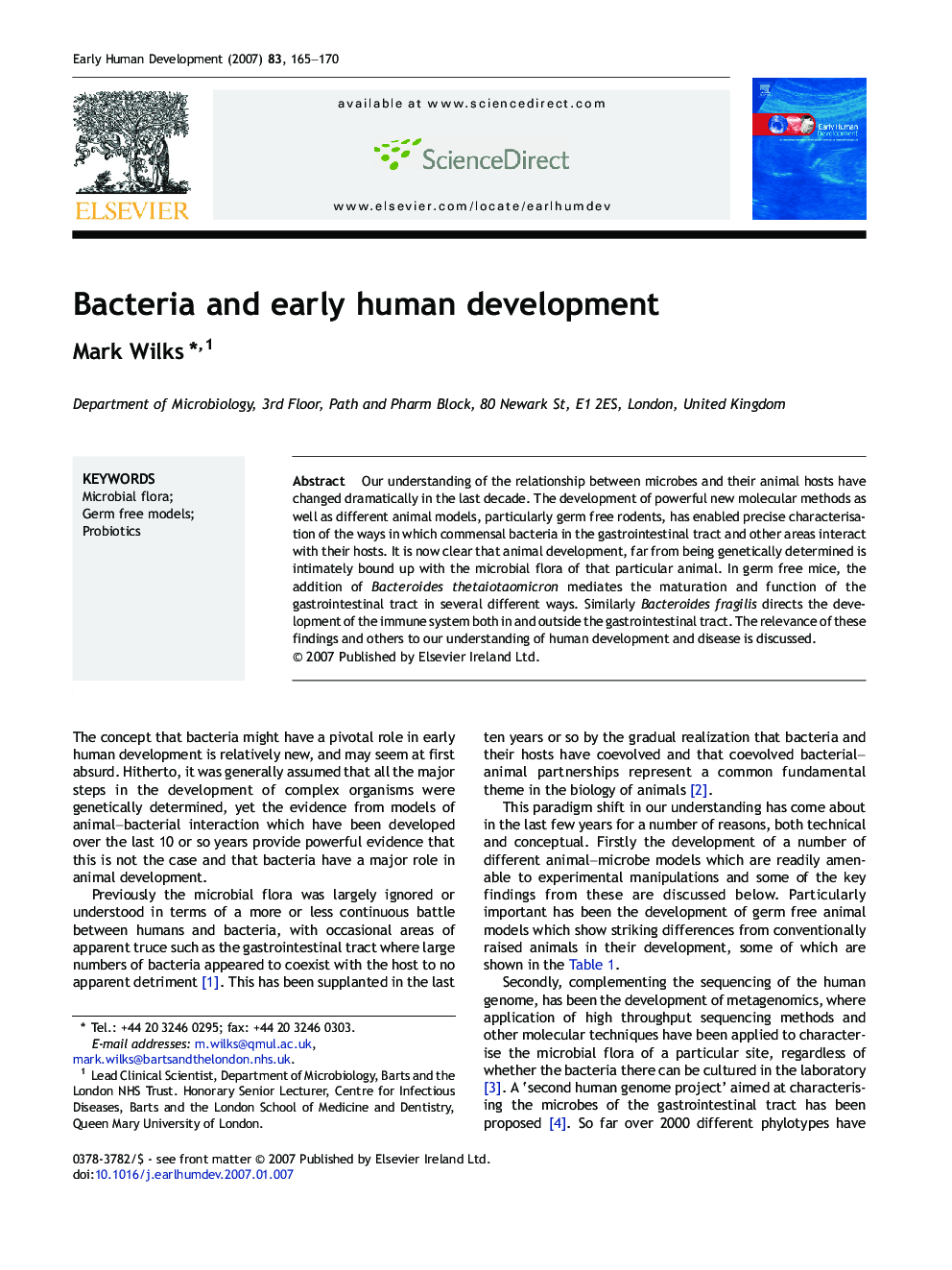| Article ID | Journal | Published Year | Pages | File Type |
|---|---|---|---|---|
| 3918630 | Early Human Development | 2007 | 6 Pages |
Our understanding of the relationship between microbes and their animal hosts have changed dramatically in the last decade. The development of powerful new molecular methods as well as different animal models, particularly germ free rodents, has enabled precise characterisation of the ways in which commensal bacteria in the gastrointestinal tract and other areas interact with their hosts. It is now clear that animal development, far from being genetically determined is intimately bound up with the microbial flora of that particular animal. In germ free mice, the addition of Bacteroides thetaiotaomicron mediates the maturation and function of the gastrointestinal tract in several different ways. Similarly Bacteroides fragilis directs the development of the immune system both in and outside the gastrointestinal tract. The relevance of these findings and others to our understanding of human development and disease is discussed.
